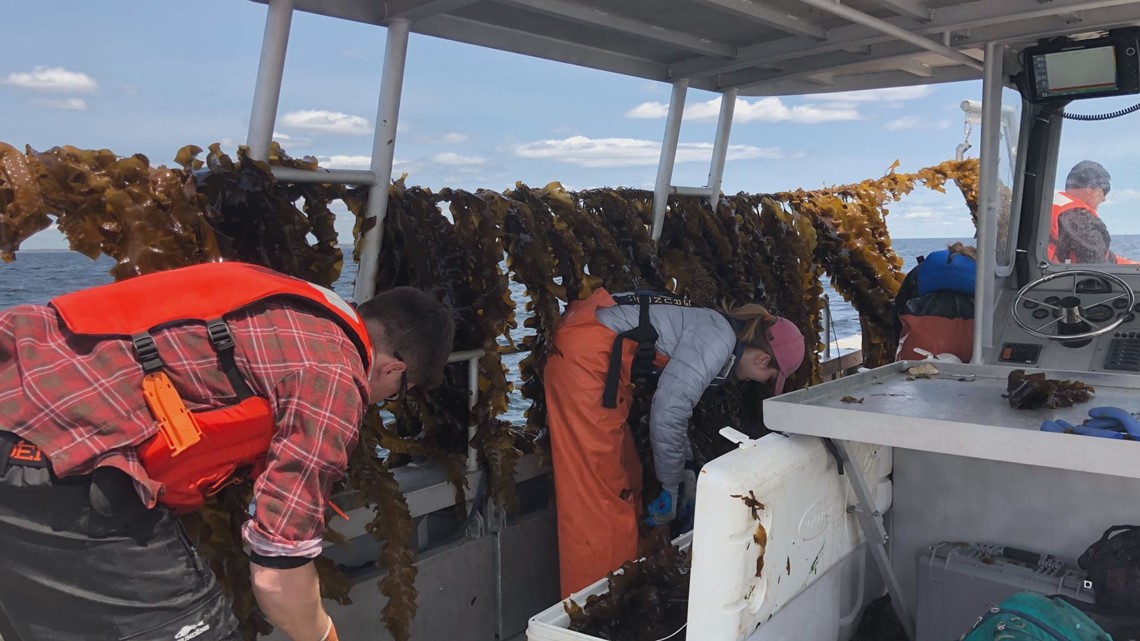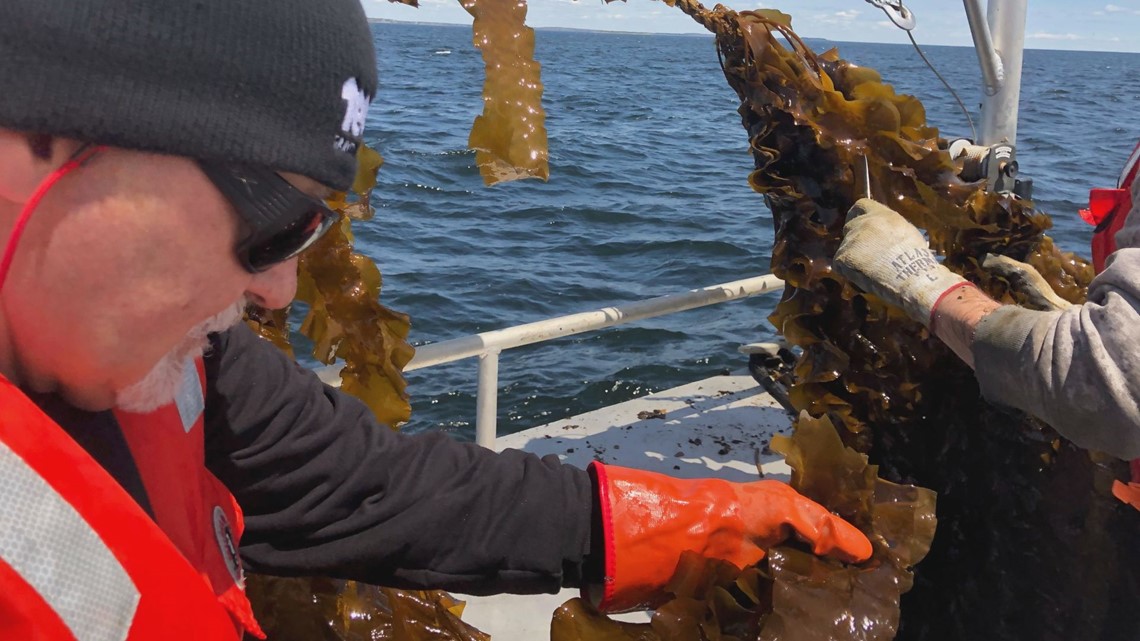BIDDEFORD, Maine — "The great crisis on this planet with 10 billion people is going to be food, water, waste, and shelter," said Barry Costa-Pierce, the director of the University of New England's Center for Excellence in Marine Sciences.
Costa-Pierce and his team of researchers at the University of New England have high hopes for long brown ribbons of seaweed called sugar kelp. It grows in salt water throughout the winter months, requires very little light, and no fertilizer.
"Rich in minerals and vitamins, and we get like 15, 18, 20 pounds per foot of line," he added.
After a long winter, Wednesday was harvest day at their farm in Saco Bay.


Researchers believe seaweed could someday be used as a major source of food, feedstock, even biofuel, all while not competing with precious resources and land.
"You always hear that Maine has this incredible vast coastline 3,500 miles of coastline and think we could have seaweed farms all over," said Adam St. Gelais, system director for science at UNE North. "In fact, the inshore Gulf of Maine is a really busy place we have shipping lanes, lobstermen, there's only so many places you can tuck a seaweed farm and have a nice protected place to be."
UNE researchers, with help from Maine Marine Composites which is an ocean engineering company, are trying to find a secure way to farm kelp in a larger capacity, in the open ocean.
"Our goal is to develop models to predict how things like kelp farms respond to storms so we can design them better and more economically," said Toby Dewhurst of Maine Marine Composites.
It's all part of a three-year program funded by the U.S. Department of Energy and its $1.3 million research grant.
Costa-Pierce calls kelp's potential a "seaweed revolution."
"[It] could be just as important as any agriculture revolution we've developed on this planet."


RELATED: Seaweed: It's what's for dinner

